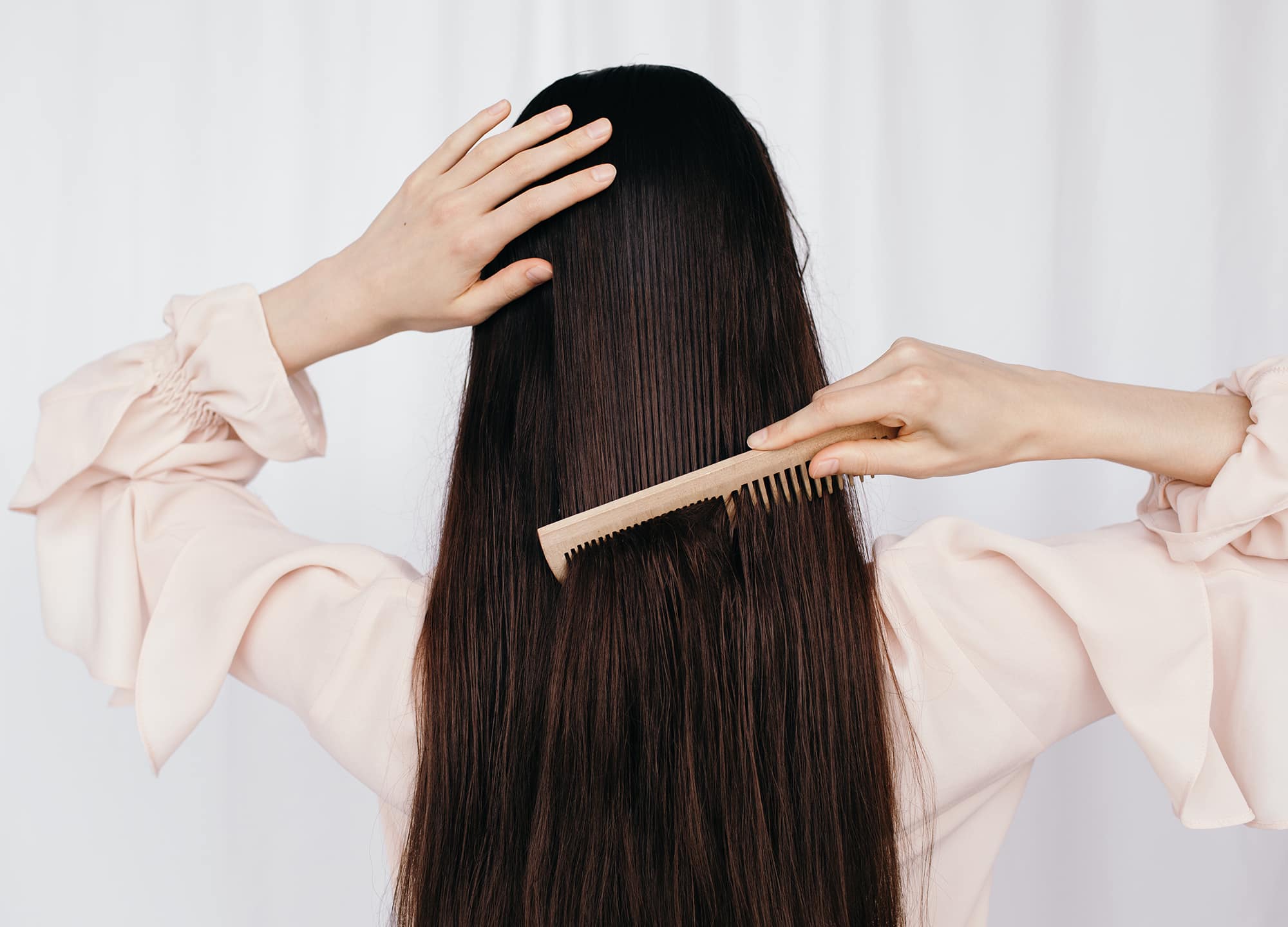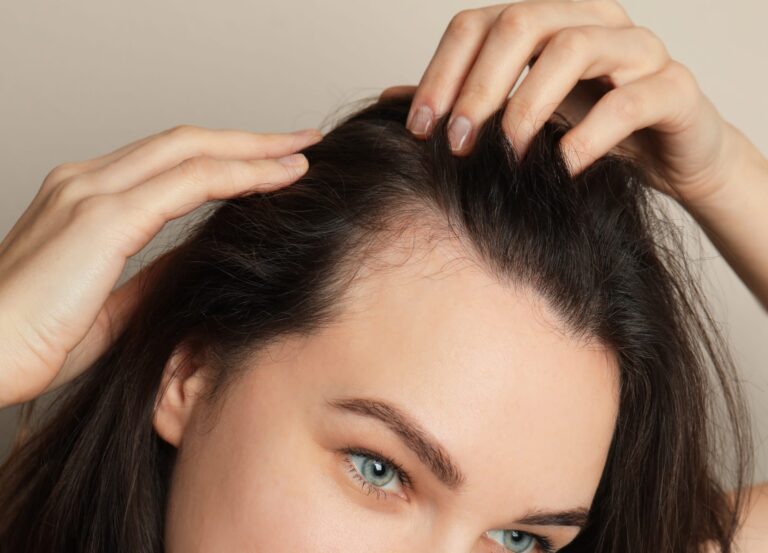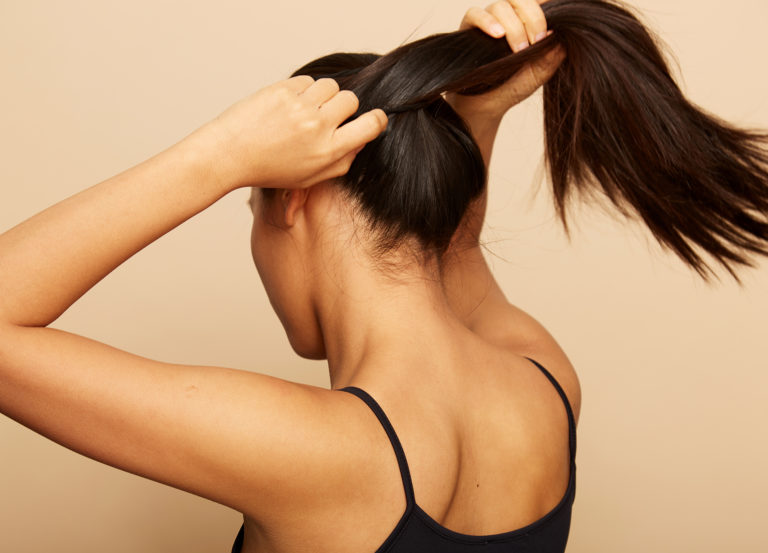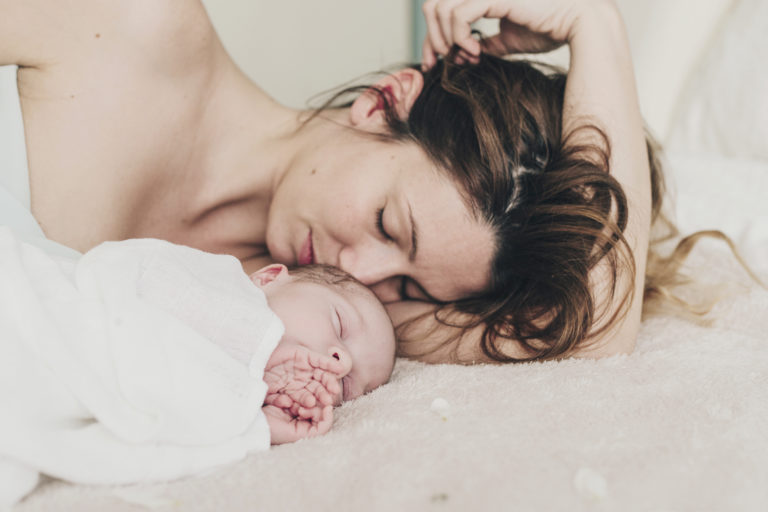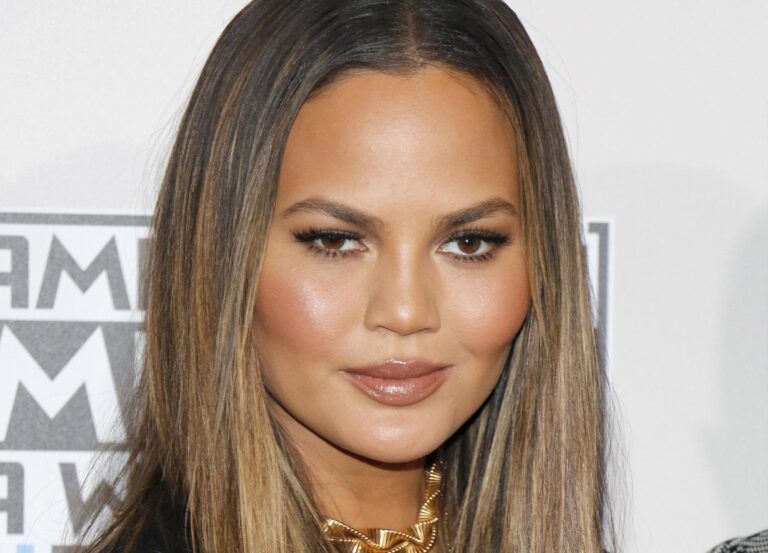Ever since I was a teenager, I’ve been obsessed with wanting shampoo-commercial-worthy hair. In ninth grade, I made a DIY avocado and honey hair mask because I’d read in a magazine that it would give my thin strands a boost in both strength and shine. Sadly, the hair mask left me with just a clogged shower drain and oily—not healthier—hair. At the time, I was disheartened by my lack of results, and my search for something that could actually produce more luscious locks lasted quite a few years. Thankfully, there are effective options available.
“[While] there is no way to change the texture of the hair follicle, using beauty products that support hair follicle health can result in healthier, shinier, thicker-looking hair,” says board-certified hair restoration surgeon and medical director for HairClub in Raleigh, North Carolina, Dr. Angela Phipps. Here, Dr. Phipps breaks down exactly why we lose our hair in the first place—and what to do about it.
What can provoke hair loss?
“Hair loss can have a variety of causes, but by far, the most common cause is genetics,” explains Dr. Phipps. “This cause of hair loss is called androgenetic alopecia.” Certain individuals have the genetic predisposition for their hair follicles to be sensitive to circulating hormones—specifically, an androgen called dihydrotestosterone (DHT)—in the body that cause those follicles to produce steadily thinner hair over time.
But that’s not all. Certain medical conditions (like thyroid issues), medications, and poor diet can also lead to thinning hair. “Causes of hair loss can include underlying medical conditions that can either be systemic or isolated to the scalp, chronic use of certain classes of medication, hormonal imbalances, poor nutrition, vitamin deficiencies, fever, and even stress,” explains Dr. Phipps. So it’s important to see a doctor at the first sign of hair loss, to rule out any underlying medical issues before trying to treat hair loss on your own.
Related: Everything You Need to Know About Postpartum Hair Loss—Including How to Treat It
What are the at-home solutions?
1. Hair products with strengthening ingredients
Once potential medical issues are ruled out as a cause for hair loss, you can start your own personal treatment. If your hair loss is mild or you simply want to strengthen the strands, a few purchases from your local beauty supply store might suffice. Hair follicles are composed of a strong protein called keratin, so products that contain proteins—such as keratin, soy, and wheat proteins—help support follicle strength, Dr. Phipps explains. These proteins—with the most popular being keratin—are absorbed by the hair cuticle and help to seal and smooth the damaged hair shaft, improving hair color and shine. “Other shampoo ingredients that are good for hair health include vitamins B5, D3, and E, essential oils like peppermint oil, cedarwood oil, tea tree oil, jojoba seed oil, and grapefruit oil, and fortifying extracts such as horsetail, nettle, and willow bark.” For inexpensive options containing these ingredients, try Viviscal Gorgeous Growth Densifying Shampoo ($9)—which utilizes keratin—and Nioxin Scalp Optimizing Cleanser ($20), which contains B vitamins and nettle root extract to boost hair health.
Dr. Phipps also asserts that there are a few ingredients to be wary of while shopping the hair care aisle as well. Substances like sulfates (such as ammonium lauryl sulfate, sodium laureth sulfate, and sodium lauryl sulfate); alcohols; parabens; and formaldehyde are detrimental to the health of the hair follicle and should be avoided while shopping for products.
2. Minoxidil
Minoxidil—the active ingredient in Rogaine—is an over-the-counter topical treatment that’s applied directly to the scalp. “This is absorbed into the skin of the scalp and reaches the hair follicle cells, stimulating blood flow and metabolic activity,” says Dr. Phipps. “Higher-functioning hair follicle cells can live longer and have the ability to produce thicker, stronger hair shafts.” Hair growth usually occurs several months after using products containing minoxidil; however, results last only while the product is being used. Hair loss will begin again once treatment is stopped.
While minoxidil can be highly effective for many, it can come with a few side effects—scalp irritation, unwanted growth of facial hair, and change in hair color or texture are the most common.
3. Finasteride
“Finasteride is a daily oral prescription medication for men that works by blocking the production of the DHT hormone,” explains Dr. Phipps. Originally created to be prescribed in a five milligram dosage to treat an enlarged prostate, finasteride has been found to also prevent hair loss when prescribed in a one milligram dosage (which is sold as Propecia). However, finasteride has recently come under fire for its side effects, specifically, sexual dysfunction. As with any new prescription, discuss your options with your doctor and do your research about the risks before committing to any drug.
4. Supplements
A healthy outside is the reflection of a healthy inside. “Proper nutrition is key to healthy hair, and a well-balanced diet is usually sufficient to provide the vitamins and minerals necessary,” says Dr. Phipps. “However, depending on your dietary practices, supplementation might be necessary.”
According to Dr. Phipps, the vitamins and minerals important for healthy hair include vitamin A, B vitamins, vitamin C, vitamin D, vitamin E, iron, zinc, and protein. If you’re not consuming healthy levels of these vitamins and minerals through a wholesome diet of fruits, vegetables, and proteins, supplements like Viviscal ($50), Nutrafol ($75) and Hush & Hush Deeply Rooted ($75) are all viable options for improving hair thickness.
What are the in-office solutions?
1. Platelet rich plasma
Platelet rich plasma therapy is a treatment that uses injections of your blood’s own platelets—which contain growth factors and proteins—to boost hair growth. “These growth factors help stimulate the hair follicle cells to produce thicker, stronger hair shafts which can result in [better-looking] hair,” says Dr. Phipps.
Studies have shown that PRP treatment can improve hair growth, and with an 89% Worth it Rating on RealSelf, it’s clear that patients are generally happy with results. However, it can take up to four treatments—spaced four to six weeks apart—to see dramatic changes. And considering the treatment has an average cost of $2,125, those PRP treatments can rack up quite the bill.
Related: The Best Shampoos to Use After Your PRP Scalp Treatment, According to Dermatologists
2. Low-level light therapy (LLLT)
Another option for promoting hair growth is low-level light therapy (LLLT). “[LLLT] is a treatment modality where light of a specific wavelength is applied to the scalp and will penetrate to the [deeper] level of the hair follicle cells,” explains Dr. Phipps. “This light stimulation increases the metabolic activity of those cells—which, again, can result in a stronger, thicker hair shaft being produced.” Studies have shown that LLLT is both safe and effective (with no pain or downtime) for provoking hair growth by improving circulation in the scalp. However, Dr. Phipps reminds us, LLLT requires multiple sessions (sometimes more than once per week) in order to see results. With an average cost of $2,500, some patients prefer a less pricey option for strengthening their strands.
3. Hair Transplant
For a more permanent outcome, patients can choose hair transplant surgery. “One can undergo an in-office, outpatient hair restoration procedure by a physician to replace hair follicles that have been lost,” explains Dr. Phipps. “Hair from the back of the scalp, which is usually resistant to that miniaturization hair loss effect, is taken and reimplanted into the thinning areas of the scalp.”
Candidacy for surgery requires the evaluation of a trained hair loss physician, to ensure that the hair from the back of the scalp, which is called donor hair, is suitable for transplantation. When hair is properly transplanted, it grows for the rest of your life. However, a hair transplant doesn’t stop the progression of hair loss everywhere on the scalp. Patients may need to have subsequent procedures in other areas if preventive therapy isn’t taken or doesn’t work well, and not all transplanted hair will survive.
RealSelf members say they paid, on average, $7,000 for hair transplant surgery, and the procedure has a 93% Worth It Rating on RealSelf.







